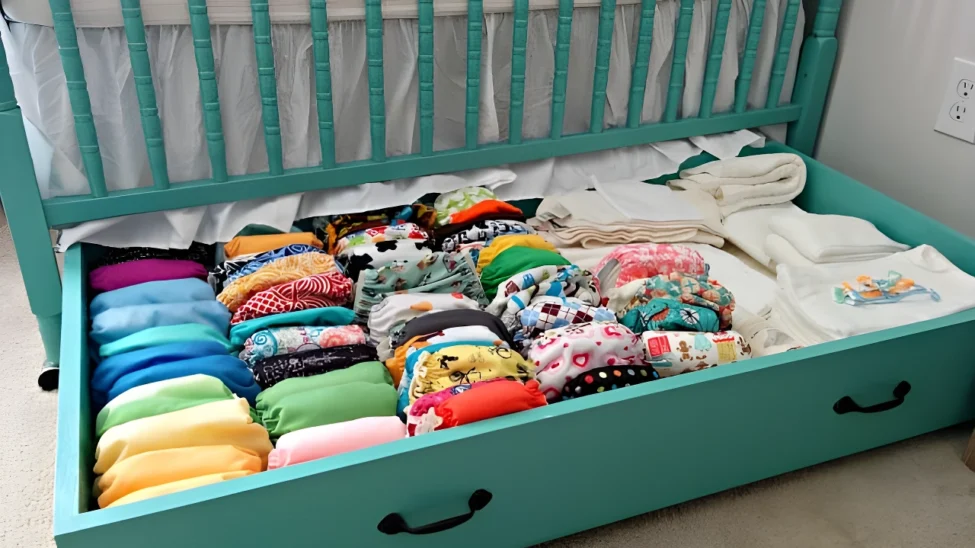
Why Storage Can Be a Lifesaver
I still remember those first weeks after bringing my daughter home from the hospital. Every diaper change felt like a small quest for wipes, onesies, or a spare swaddle. Nothing was where I thought it would be — usually because it didn’t *have* a place yet. That’s when I realized how much difference a crib with storage can make. You’re not just choosing a place for your baby to sleep — you’re choosing a tool that helps you stay organized, efficient, and maybe a little more sane during those sleep-deprived months.
Storage isn’t a luxury; it’s a strategy — especially when you’re navigating baby life in a small space or want everything within arm’s reach for night wakings.
Types of Storage Built into Cribs
Let’s break it down: not all storage is created equal. Some cribs come with large pull-out drawers underneath, others with attached changing tables that feature shelves or small cabinets. And then there are convertible models that offer storage compartments built into both the crib and the future toddler bed or daybed.
The under-crib drawer is by far the most common — and surprisingly versatile. You can use it for extra bedding, diapers, or even clothes your baby hasn’t grown into yet. What I personally loved when my son was born was a crib with a side shelf built into the changing table. It became our go-to spot for lotions, creams, and yes, that one rattle he was obsessed with at two months old.
There are also minimalist designs with fabric bins beneath the crib — lightweight and great for storing seasonal things or toys. They’re less structured, but in tight quarters, that flexibility is gold.
Making the Most of Storage: Smart Use Cases
It’s one thing to have storage — and another to use it smartly. A client of mine, a mom of twins in a one-bedroom apartment in Brooklyn, turned the under-crib drawers into zones: one side for sleep essentials, the other for diapering supplies. She even added small labeled pouches inside the drawer to avoid rummaging around during midnight wakeups.
The trick is treating the crib’s storage like a toolbox, not a junk drawer. Think categories, think frequency of use, think one-handed access.
Some families I’ve worked with repurpose shallow under-crib drawers as memory boxes — for baby’s first socks, hospital bracelets, and all the keepsakes that don’t have a home yet. It’s sweet, and it clears your shelves from random baby clutter.
If your crib includes a changing table with cabinets or shelves, try using bins to create pull-out drawers within those spaces. Bins with handles make it easier to grab what you need quickly — no knocking things over at 3 a.m.
When Storage Really Matters: Small Spaces and Shared Rooms
In compact homes or when your baby’s sharing a room with you or a sibling, every square inch has to earn its keep. Crib storage becomes less of a bonus and more of a survival tool. In these situations, I always recommend models with deep, easy-glide drawers and no wasted space beneath the mattress.
One couple I worked with in Chicago had a combined nursery and home office. Their crib’s storage drawers became their hidden stash for burp cloths and pumping supplies — and during video calls, everything was out of sight. Smart, right?
Storage lets you turn the crib into a command center, even when the nursery is actually a corner of your bedroom.
Also, for second-time parents reusing a crib, adding external storage like over-crib organizers or bedside caddies can make a basic crib more functional without buying a whole new piece of furniture.
Things to Watch Out For Before Buying
Of course, not all storage cribs are perfect. Some drawers are shallow or hard to access because the crib skirt or design blocks them. Others might look cute in photos but have wobbly drawers or poor build quality. Always read the reviews carefully.
I once had a family order a crib online that arrived with drawers they couldn’t open unless they pulled the whole crib away from the wall. You can guess how long that lasted.
Also check for safety: are all compartments smooth-edged and well-secured? Are there any exposed nails or splinters inside drawers? Function should never come at the expense of safety.
Before clicking “add to cart,” picture yourself using those drawers at 2 a.m. with a fussy baby in one arm and no patience in the other.
And if you plan to convert the crib to a toddler bed later, make sure the storage won’t become awkward or useless in its new configuration. Some convertible models offer detachable drawers that can slide under the toddler bed, which I think is brilliant.
Storage Isn’t Just About Stuff — It’s About Peace of Mind
What I’ve learned — both as a mom and sleep consultant — is that clutter clouds everything. It makes it harder to relax, to find what you need, to feel in control. And when you’re navigating night feeds, sleep regressions, and teething, the last thing you want is to be hunting for the pacifier at the bottom of a toy bin.
Crib storage gives you structure. It helps you build little systems that make the day smoother. Is it a big deal if you don’t have it? Maybe not. But having it can be a small win — and in parenting, small wins add up.
So when you’re choosing your crib, think beyond just sleep. Think about the quiet relief of reaching under the mattress and finding exactly what you need. Because that ease? It matters more than it seems.


